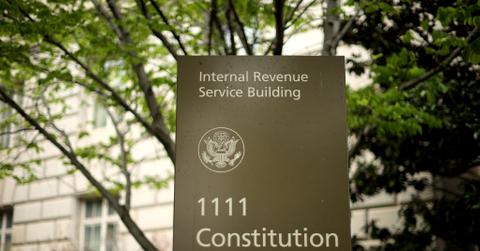Your Tax Refund Could Be Smaller in 2022 for a Variety of Reasons
For most people, getting a tax refund is one of the most anticipated payments to get during the year. Why are some people getting a smaller tax refund in 2022?
March 21 2022, Published 4:09 p.m. ET

Tax season has been underway for a few months now, and many people have received their tax refunds early. In the U.S., people look forward to receiving a tax refund from the IRS and their state, and 2022 isn't any different. However, some people have complained about receiving a smaller tax refund than in previous years. Most people expect to get smaller refunds in 2022, but is that actually happening?
Every year, some people receive a larger or smaller refund than normal, but they won’t know why. Many tax experts recommend that people file with a CPA or a tax filing agency that can help you understand deductions, tax penalties, and more. Even though self-filing makes filing taxes easy and less time-consuming, if someone is a business owner or does contractor work, there’s a good chance they don’t know how to apply deductions 100 percent accurately.

What's the average tax refund in 2022 compared to 2021?
In 2021, the average tax refund in the U.S. was $2,815. As of February 18, 2022, the average refund has been around $3,590, according to Go Banking Rates.
With nearly a $700 increase compared to last year, the numbers are somewhat surprising. Many people expected to receive smaller refunds compared to 2021. There's still time left before the tax filing season is over, as the deadline for filing is April 18. So, the average could end up decreasing drastically — it’s still too early to tell.
There are various reasons tax refunds could be higher so far.
While it’s still too early to tell what the average tax refund will be by the end of tax season, refunds could be high so far because some people may have had their employees withhold too much of their salaries for taxes.
Employers will always withhold a portion of your pay for taxes, but sometimes they can over-calculate and end up sending too much money to the IRS. One way to help avoid your employer from overpaying on taxes is calculating your tax liability, which is the amount of money you’ll owe throughout the year.

Your tax liability will depend on how much money you make as well as the tax bracket you’re in. For example, if you made a tax income of $50,000 in 2021, you would fall in the 22 percent tax bracket.
The marginal tax rate would be 22 percent because that taxable income falls in the range of $40,525–$86,375. That would leave you with a tax liability of approximately $6,748, according to NerdWallet. You can subtract that estimated tax liability from the annual tax withholding of your employer and then find out how much your employer is over-withholding.
Why could your tax refund be smaller in 2022?
A person might not have noticed to file certain taxable items, such as capital gains from stocks or crypto. Many people started buying stocks, trading options, and investing in crypto for the first time ever in 2021. Some people might not have realized that when they withdraw their profits, those have to be taxed. The IRS can deduct from your original estimated return. There were also the extra unemployment payments from last year that many people had to pay taxes for in their tax filings.
